Gyeongju Jungang Market (경주 중앙시장)
1.2Km 2025-05-21
295 Geumseong-ro, Gyeongju-si, Gyeongsangbuk-do
+82-54-743-3696
Opened in 1983, Gyeongju Jungang Market is the main marketplace for Gyeongju locals. Nearly 700 stores selling clothing, oils, rice cakes, vegetables, general goods, and meat operate with some 2,000 vendors. The market is open nearly every day, with the busiest days being those ending in a 2 or 7. The night market, open from Thursday to Sunday, is especially popular among both tourists and locals.
REVERTAIN HOTEL GYEONGJU[Korea Quality] / 리버틴호텔 경주[한국관광 품질인증]
1.3Km 2020-12-12
23, Taejong-ro 685 beon-gil, Gyeongju-si, Gyeongsangbuk-do
+82-54-620-8988
Rivertain Hotel Gyeongju is a business hotel that is distinguished by its convenient access and practical facilities, as it is located only 5 min away from Gyeongju Intercity Bus Terminal and 10 min away by foot to Hwanglidangil Street and Daereungwon Ancient Tomb Complex, Cheomseongdae Observatory, Donggung Palace, and Wolji Pond. Gyeongju World Culture Expo Park is also just a 20 min drive away. There are various room types offered, ranging from Standard to Twin, Triple, Suite, Suite Terrace, and Barrier-free. All rooms are furnished with a gray and brown-toned interior for comfort and equipped with premium mattresses, plush handmade goose down bedding, and stylers. In addition to work desks, the rooms are also furnished with a tea table and sofa for conventional tourists as well as business clients. Moreover, Rivertain Hotel Gyeongju is notable for having a full Barrier-free room for unobstructed travel. On-site facilities include a restaurant and a café, where guests can enjoy a 30% discount on coffee. The breakfast table is the hotel’s other source of pride, put together with care and mastery. It is a Korean buffet spread full of delectable dishes, as well as bread, yogurt, fruits, and breakfast cereal.
Gyeongju National Museum (국립경주박물관)
1.3Km 2025-05-21
186 Iljeong-ro, Gyeongju-si, Gyeongsangbuk-do
Gyeongju National Museum houses numerous historical and cultural artifacts of the Silla dynasty (57 BC-AD 935). The museum provides various programs including at the Children’s Museum School. The newly renovated Silla Art Gallery and Silla History Gallery lobby by Teoyang Studio are popular among visitors. This multi-complex center provides the history of Silla with various artifacts.
Hanok Stay Sohwa [Korea Quality]한옥스테이 소화[한국관광 품질인증]
1.3Km 2024-08-14
5 , Gukdang 2-gil, Gyeongju-si, Gyeongsangbuk-do
+82-507-1325-7205
Hanok Stay Sohwa near the famous Hwangnidan-gil in Gyeongju, Gyeongsangbuk-do, is a modern hanok that opened its doors in 2022, and combines tradition with sophistication. Accommodation consists of a living room, two sleeping rooms (bedroom and ondol), two bathrooms and a kitchen, plus an outdoor terrace and a heated mini swimming pool. Visitors will find rest and comfort here, however busy and stressed they were when they set out. The hanok stay only accepts bookings from one group per day.
Gyeongju Oreung Hanok (경주오릉한옥)
1.3Km 2024-12-19
12-17 , Gukdang 2-gil, Gyeongju-si, Gyeongsangbuk-do
+82-10-8858-3183
Oreung Hanok in Gyeongju, is a guesthouse just across Namcheon Stream from Gyeongju’s Five Royal Tombs (‘oreung’ in Korean). The guesthouse’s location gives it a panoramic view not only of the tomb complex but over much of the 1,000 year old city of Gyeongju. The cozy rooms have double doors to block drafts and noise, and clean white bedding; while the spacious yard outside is a good spot for taking photos. The bustling Hwangnidan Street is a 15-minute walk away, while must-see sites Cheomseongdae, the Daereungwon tomb complex, Donggung Palace and Wolji Pond are 10 minutes away by car.
Gyeongju Hwangnyongsa Temple Site (경주 황룡사지)
1.4Km 2021-01-29
64-19, Imhae-ro, Gyeongju-si, Gyeongsangbuk-do
+82-54-779-6100
Hwangnyongsa Temple Site is located in front of Bunhwangsa Temple in Guhang-dong, Gyeongju. During the Silla Era, the Hwangnyongsa Temple was the nation’s largest temple and housed the bulk of the country’s major Buddhist treasures.
Construction of the temple began in 553 on a field east of the royal compound under the commission of King Jinheung. The king originally planned to build a palace, but decided to build a temple instead, after receiving reports that a yellow dragon had been spotted on the building site. The temple was thus named Hwangnyongsa (Temple of Yellow Dragon) and was completed in 569, seventeen years after construction began. The temple murals featured an old pine tree drawn by Artist Solgeo. During the Silla Era, the temple was the center of state-sanctioned Buddhism.
Later, when monk Jajang was studying in China during the Tang dynasty, he came across a god as he was passing by Taihe Pond. The god said to him, “The yellow dragon, which is my eldest son, is guarding Hwangnyongsa Temple upon orders of Brahma, the Creator. If you build a nine-story pagoda upon your return to Silla, the neighboring states will surrender and pay tribute, and the royal cause will be stronger. Once the construction of the pagoda is complete, prepare a memorial service for the local gods and pardon any of the country's criminals. If you follow all I have told you, no other state will dare invade Silla.”
After this encounter, Jajang returned to Silla and convinced Queen Seondeok to build the nine-story pagoda. Master architect Abiji of the neighboring state Baekje designed the pagoda and the project was built by Yongchun and 200 men using wood and stone. The night before the columns were to be erected, Architect Abiji of Baekje dreamed of the fall of Baekje and refused to complete the project. With a peal of thunder, an old monk and a man of great strength suddenly appeared from the temple's main hall, erected the columns, and magically disappeared. Abiji was so shocked at the sight that he accepted his country’s future demise as the fate of the gods and once again restarted work on the temple. (From Samgungnyusa, the Memorabilia of the Three Kingdoms)
In the twenty-three years following the completion of the pagoda, Queen Seondeok unified the Three Kingdoms; later, numerous scholars pointed to the pagoda as a contributing factor in the unification. Of the three treasures of Silla, two were located at Hwangnyongsa Temple. The largest bell of Silla was also in the temple, but was taken away during the Mongol invasion. The highest monks of Silla preached at the temple, and many kings came to listen to the Buddhist teachings.
During excavation work in July 1969, the massive foundation stones of the sermon hall, auditorium, and pagoda were found. Eight years of archaeological excavations and studies revealed the unique layout of the temple grounds, which consisted of one pagoda and three halls; also found were 40,000 or so ancient artifacts. Though foundation stones and other structures from the bottom of the temple were identified through excavation, there are no historical clues about the temple’s upper design, making the restoration of the temple in its entirety practically impossible. The size of the temple, based on archeological findings, was about 70 acres, roughly eight times larger than that of Bulguksa Temple.
The Divine Bell of King Seongdeok (성덕대왕신종)
1.4Km 2020-04-04
186, Iljeong-ro, Gyeongju-si, Gyeongsangbuk-do
+82-54-740-7500
The Divine Bell of King Seongdeok, the largest Korean bell preserved, stands 3.75-meter tall, has a lip diameter of 2.27 meters, and is 11 to 25 entimeters wide. In 1997, Gyeongju National Museum weighed it at 18.9 tons. The bell was cast to pay tribute to the memory of King Seongdeok. It was completed in 771 and named ‘The Divine Bell of King Seongdeok.’ However, because the bell was installed at Bongdeoksa Temple, it has also been called the Bell of Bongdeoksa.
The bell is also known as the Emile Bell, a name derived from an ancient legend in which a child was sacrificed in order to give sound to the bell, whose echoes of ‘em-ee-leh’ resemble the traditional Korean word for "mommy."
The tubular sound pipe at the top of the bell that helps the sound reverberate is a unique feature that can be found only in Korean bells. The yongnyu, which serves as a loop to hang the bell, has been decorated to resemble a dragon’s head. A band of arabesque patterns can be found at the shoulder, and the striking point of the bell is in the shape of a lotus flower.
The magnificent design and inscription methods used in this bell exemplify the artisan's craftmanship of the Unified Silla period. The bell is also inscribed with over one thousand Chinese characters, and its beauty and integrity have been meticulously preserved despite the passage of over 1,300 years.
KELIMGUNG (계림궁)
1.4Km 2024-08-01
932 , Poseok-ro, Gyeongju-si, Gyeongsangbuk-do
+82-54-776-8122
Gyerimgung is a comfortable hanok pension near the Oreung tombs in, Gyeongju, Gyeongsangbuk-do; the name derives from Gyerim, the forest birthplace of Kim Alji who helped found the ancient Silla kingdom. The main building has four rooms and a shared kitchen, and there are two guest rooms in the yard, where barbecues can be held; reservations are required. Residents can experience traditional activities such as Gamasot cooking and Neolttwigi, and enjoy strolling in the nearby Oreung. Other nearby attractions include Banwolseong, Cheomseongdae, and Daereungwon.
SILLA BOUTIQUE HOTEL PREMIUM (신라부티크호텔 프리미엄)
1.4Km 2024-08-22
200 , Gangbyeon-ro, Gyeongju-si, Gyeongsangbuk-do
+82-54-745-3500, +82-54-624-3366
Shilla Boutique Hotel Premium is a family-oriented hotel in Gyeongju, Gyeongsangbuk-do. Dedicated rooms for travellers with young children have low beds to prevent falls, and family customers are provided with free tickets to local playparks. For older guests, screen-golf discount coupons are provided. The hotel is a 5-minute walk from the Gyeongju bus terminal, a 20-minute bus ride from Singyeongju station, and an easy drive to most of the city’s tourist attractions.
Gyeongju Five Royal Tombs (경주 오릉)
1.6Km 2025-06-13
38-9 Geumseong-ro, Gyeongju-si, Gyeongsangbuk-do
The Five Royal Tombs (called Oreung in Korean) have been officially designated Historic Site No. 172 and are the final resting places of four kings of the Park clan—King Park Hyeokgeose (founder of the Silla Kingdom), King Namhae, King Yuri, and King Jabi—and one queen (Queen Aryeong, wife of King Park Hyeokgeose).
To the east of the royal tombs lies Sungdeokjeon Shrine, which holds the ancestral tablet of King Park Hyeokgeose. Behind the shrine is the Aryeongjeong Well, said to be the birthplace of Queen Aryeong.
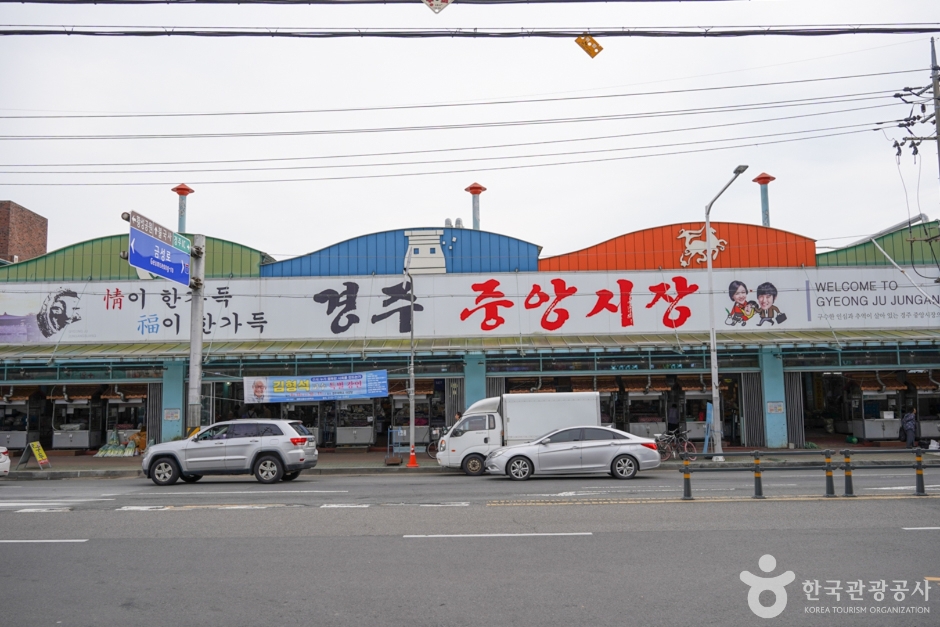
![REVERTAIN HOTEL GYEONGJU[Korea Quality] / 리버틴호텔 경주[한국관광 품질인증]](http://tong.visitkorea.or.kr/cms/resource/41/2652441_image2_1.jpg)

![Hanok Stay Sohwa [Korea Quality]한옥스테이 소화[한국관광 품질인증]](http://tong.visitkorea.or.kr/cms/resource/72/2948972_image2_1.jpg)
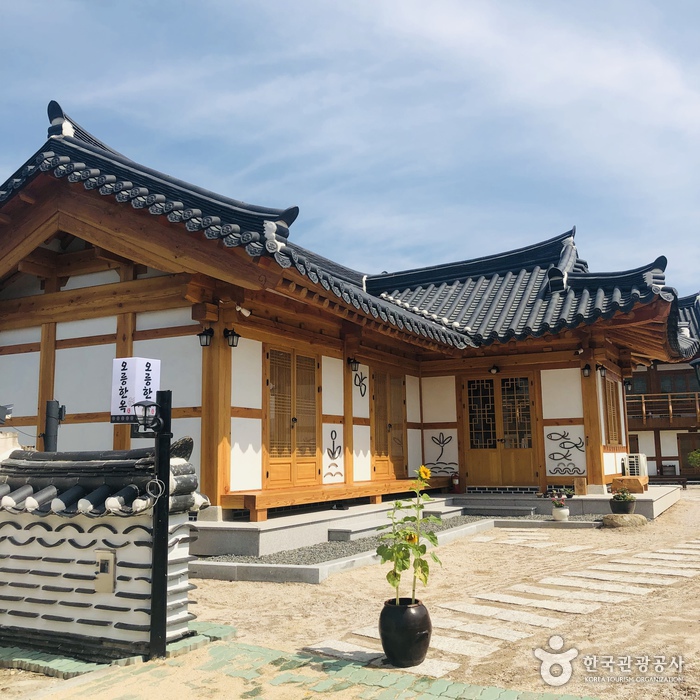
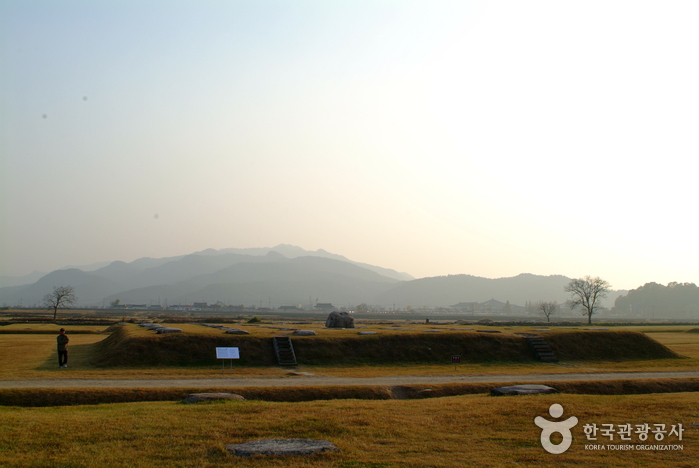
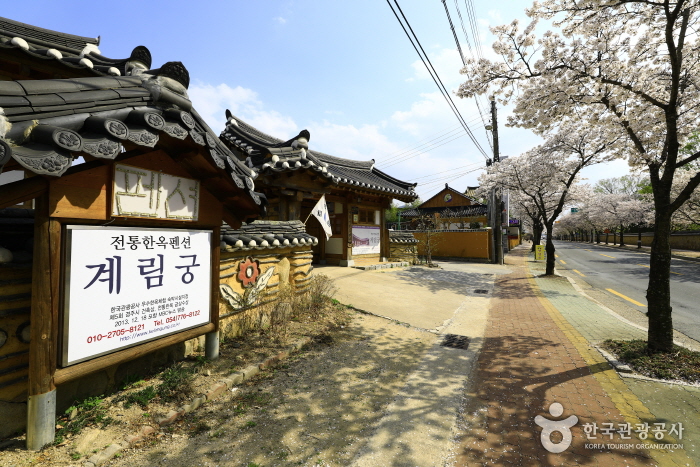
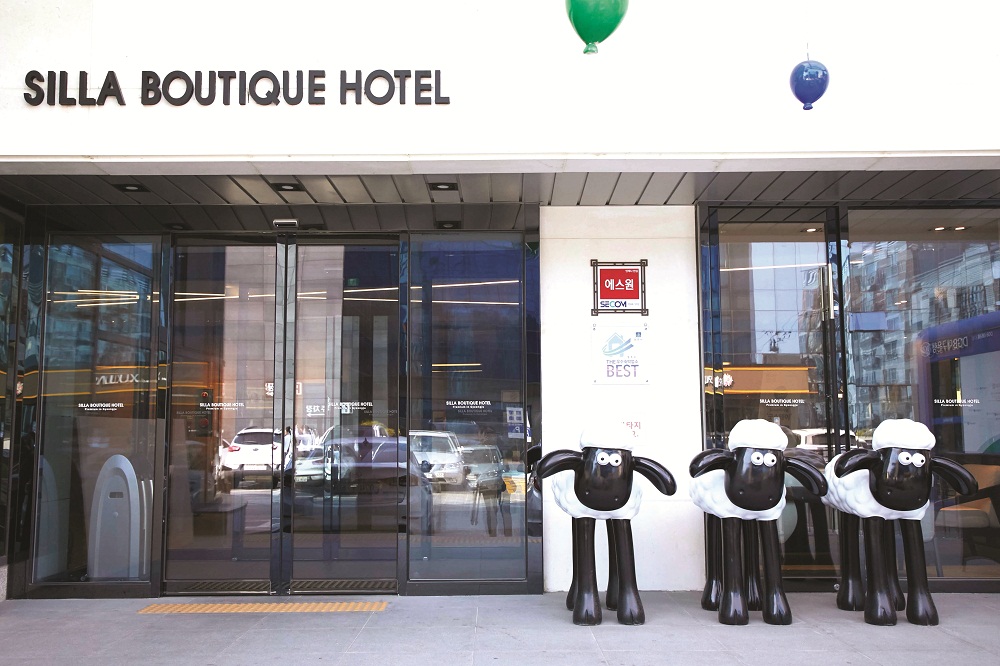
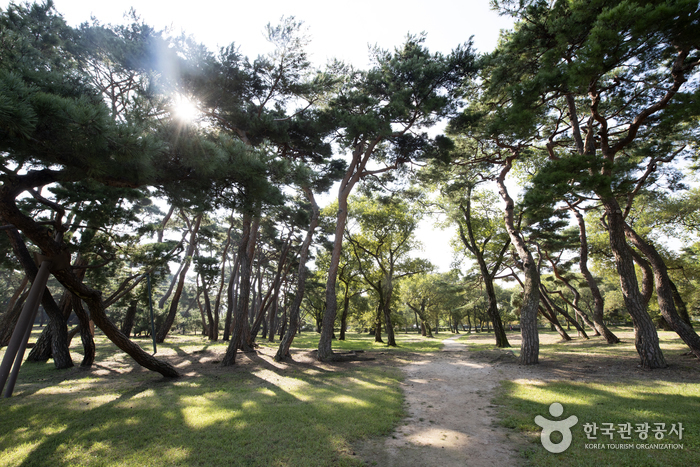
 English
English
 한국어
한국어 日本語
日本語 中文(简体)
中文(简体) Deutsch
Deutsch Français
Français Español
Español Русский
Русский